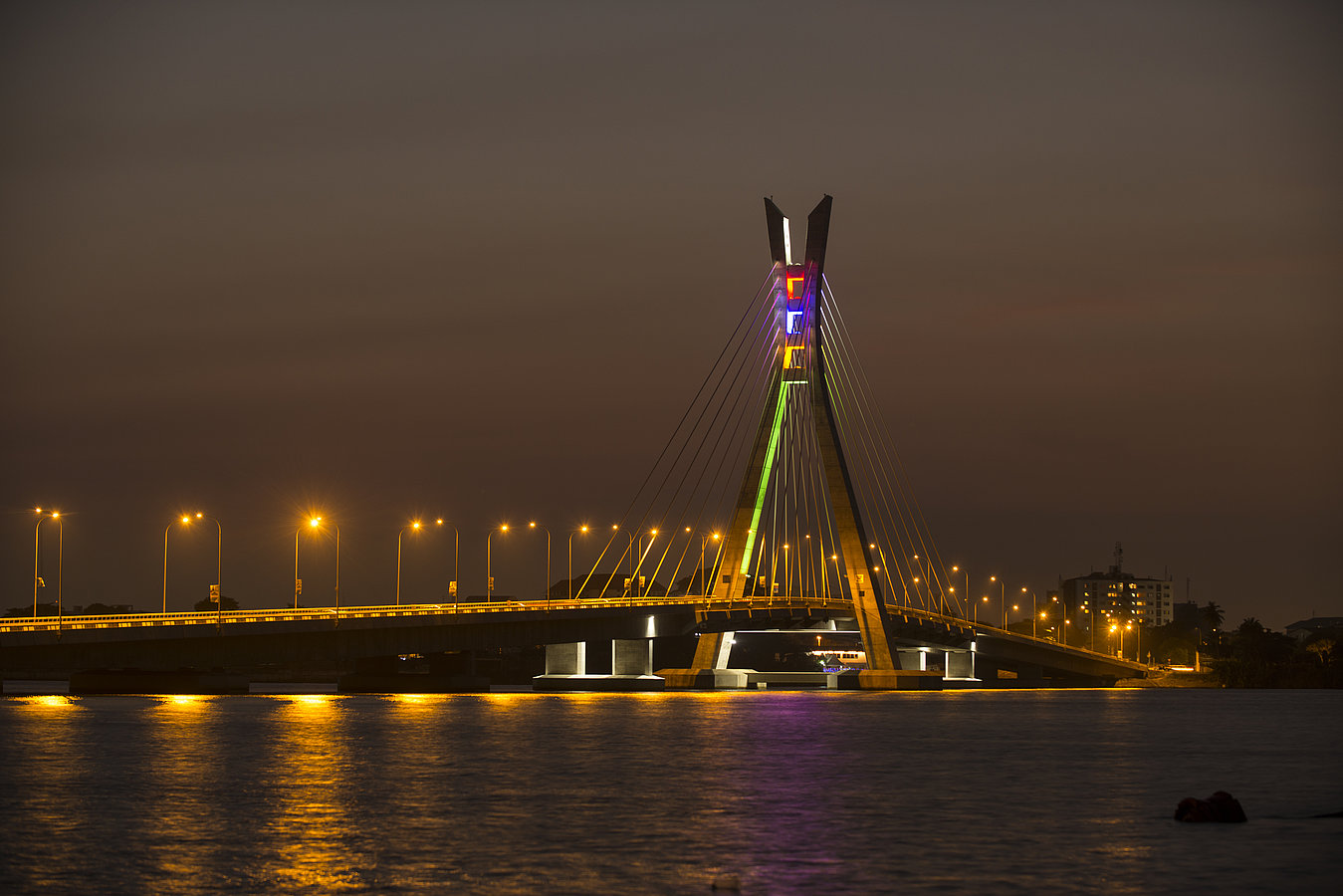
First cable-stayed bridge in West Africa and landmark of the Lagos metropolis
Admiralty Alexander Link-Bridge, Lagos
The 1,357 m long Admiralty Alexander Link-Bridge is the first cable-stayed bridge in West Africa - and a landmark of Lagos. The bridge connects the districts of Lekki and Ikoyi, providing relief to existing routes in the economic center of Nigeria.
Julius Berger was responsible for the design and construction of the bridge. Segmental construction methodology was implemented on the main bridge and panel construction for the foreshore bridge. The 2x2-lane main bridge has a length of 635 meters and is provided with an impressive 90-meter high pylon in the middle, which supports the adjoining bridge spans via inclined steel cables. The spans between the bridge piers are up to 112 meters. Adjacent to the main bridge, two bridge connections, so-called "Approach Bridges", were built on both sides with a total length of 722 meters. On one of these connections, a toll station was built and widened to provide 2x3 lanes. The main bridge provides the required 9 m headroom above water level to allow for maritime traffic.
All bridge deck elements were pre-fabricated. For the approach bridge complete span elements with a weight of 250 to each were produced and installed by two tailor made launching girders. The main bridge section consists of precast segmental box girder elements with a maximum weight of 79 to. The installation was carried out following the balanced cantilever principle deploying a further tailor made launching girder and two lifting frames respectively. The pylon with its two legs clearly characterizes the appearance of the bridge. Due to its special shape, the pylon is filigree and very striking.
The geometrical complexity of the bridge structure combined with the use of mainly precast concrete elements required highly detailed planning throughout the entire project.
31,900 m²
Road area
57,400 m³
Concrete
1,357 m
Total bridge length
60 m
Maximum pile length
90 m
Pylon height










